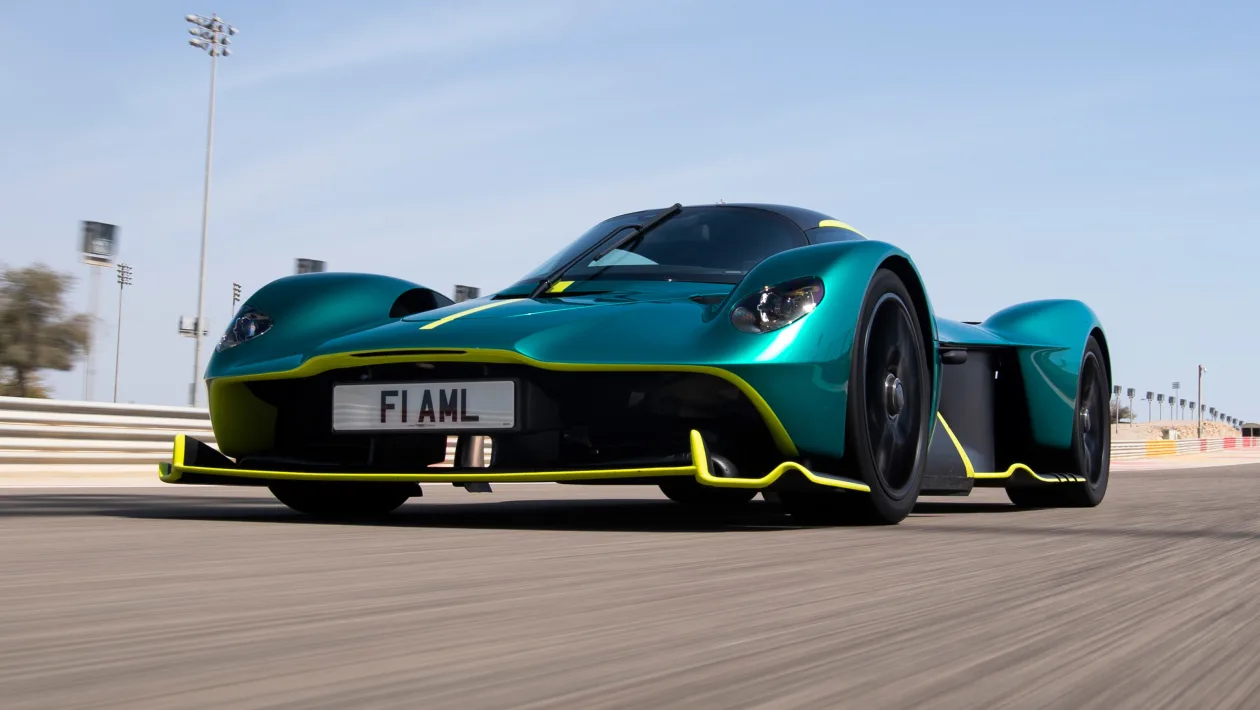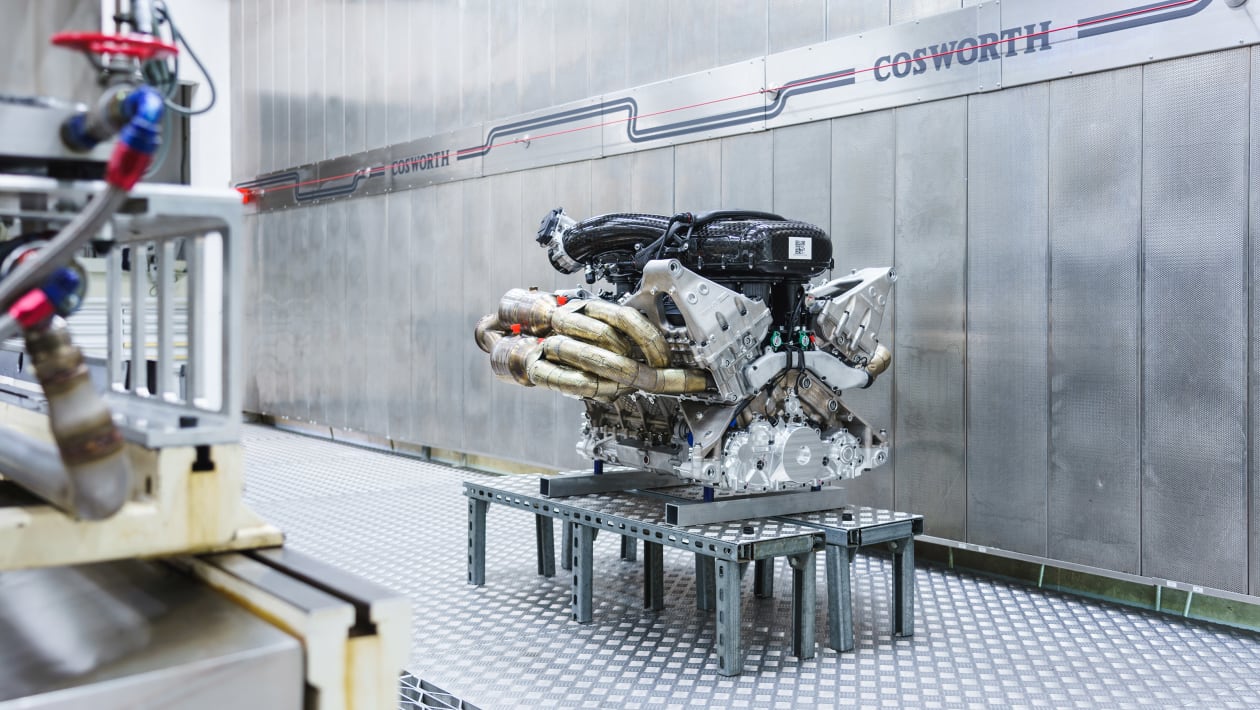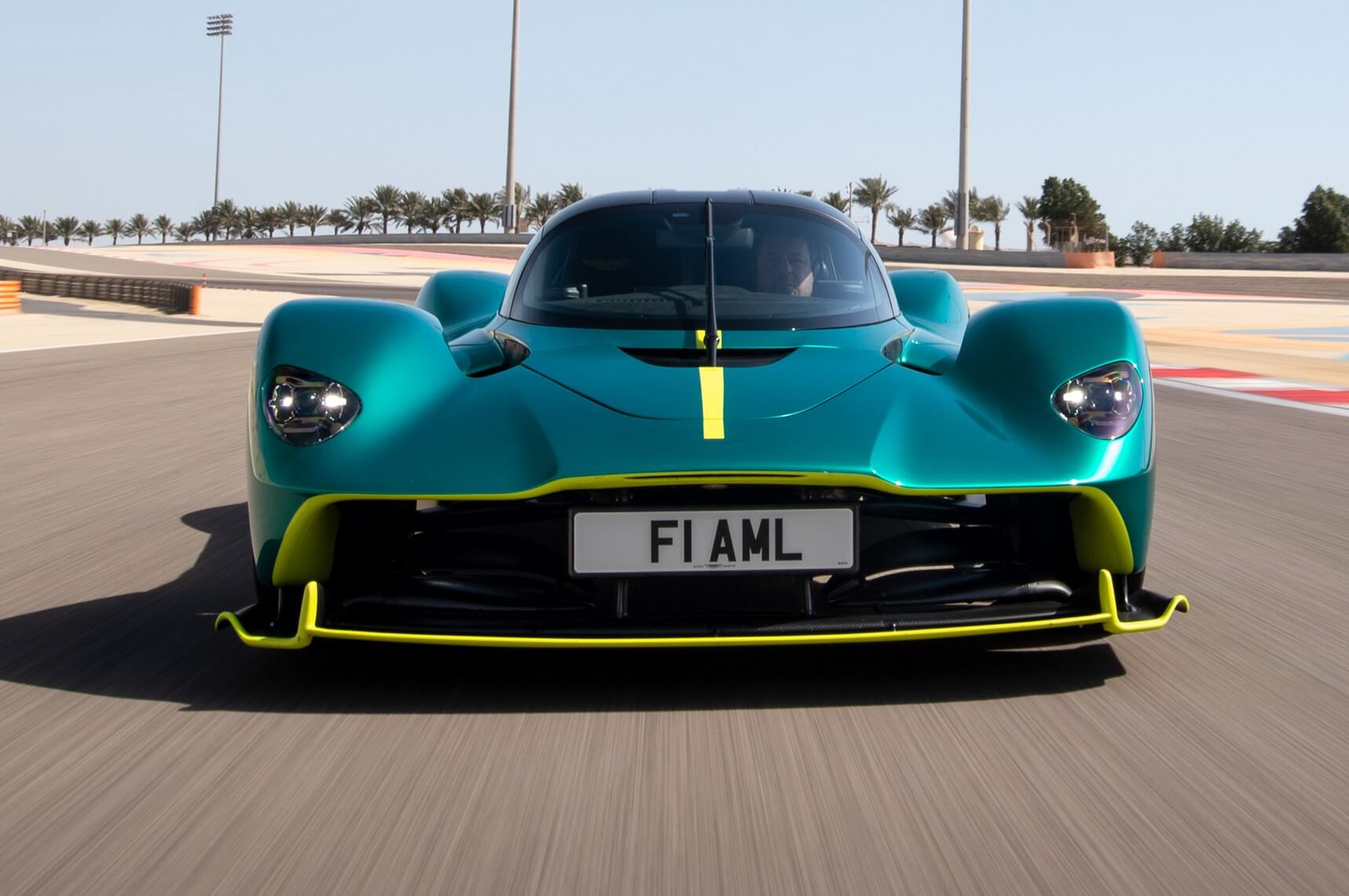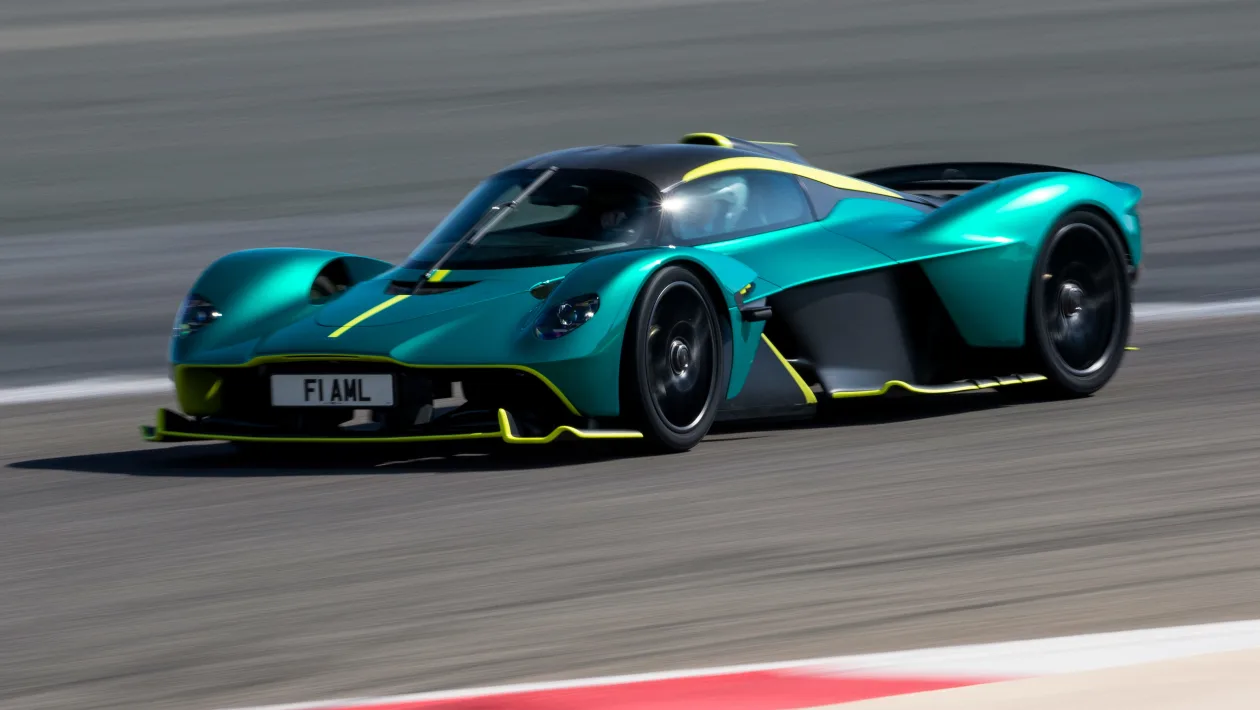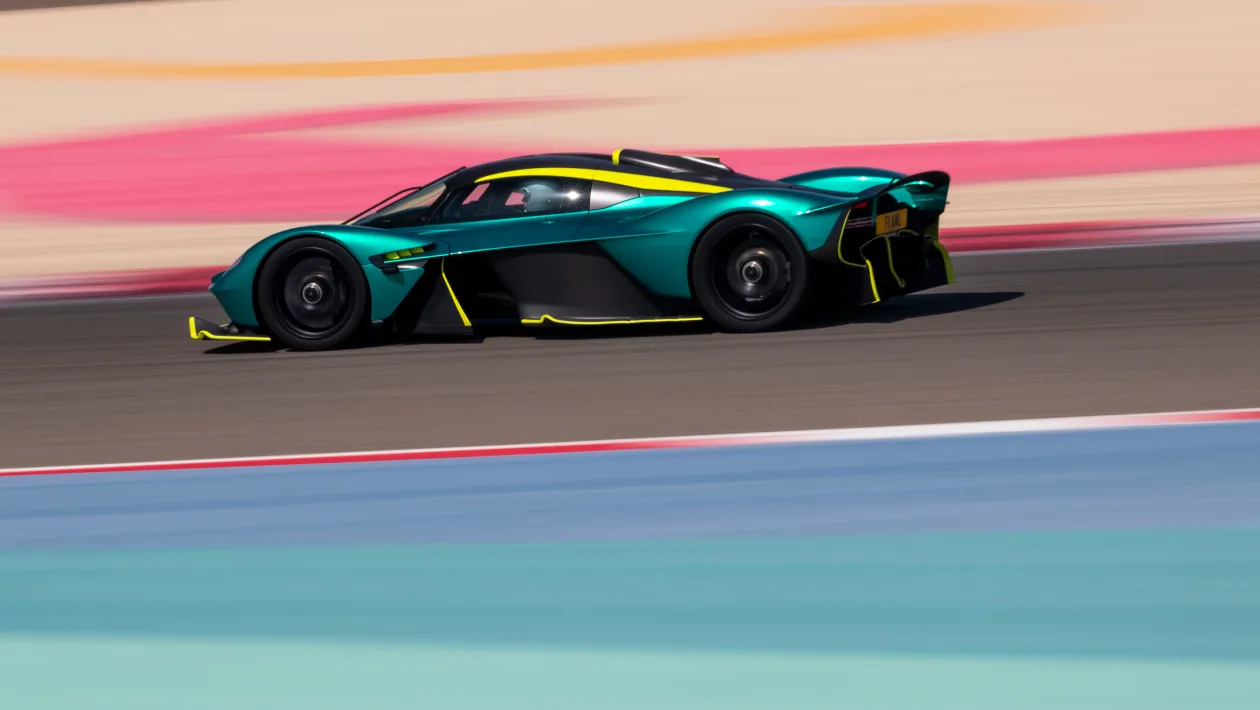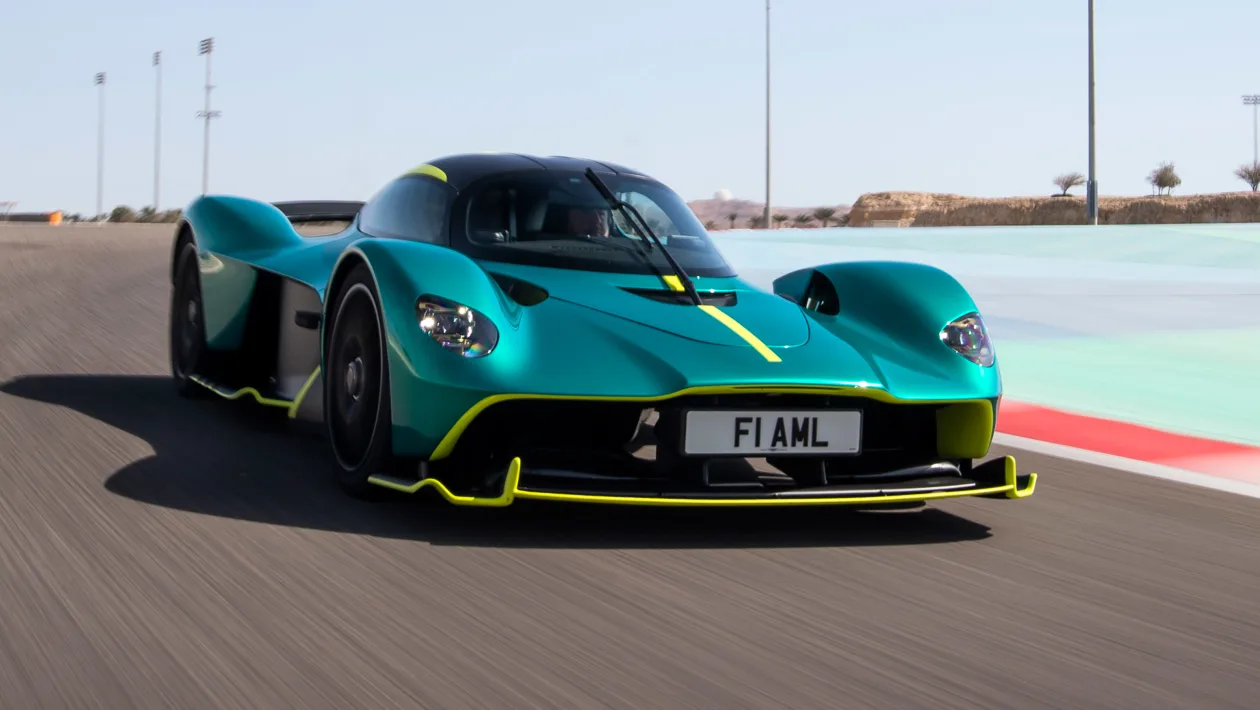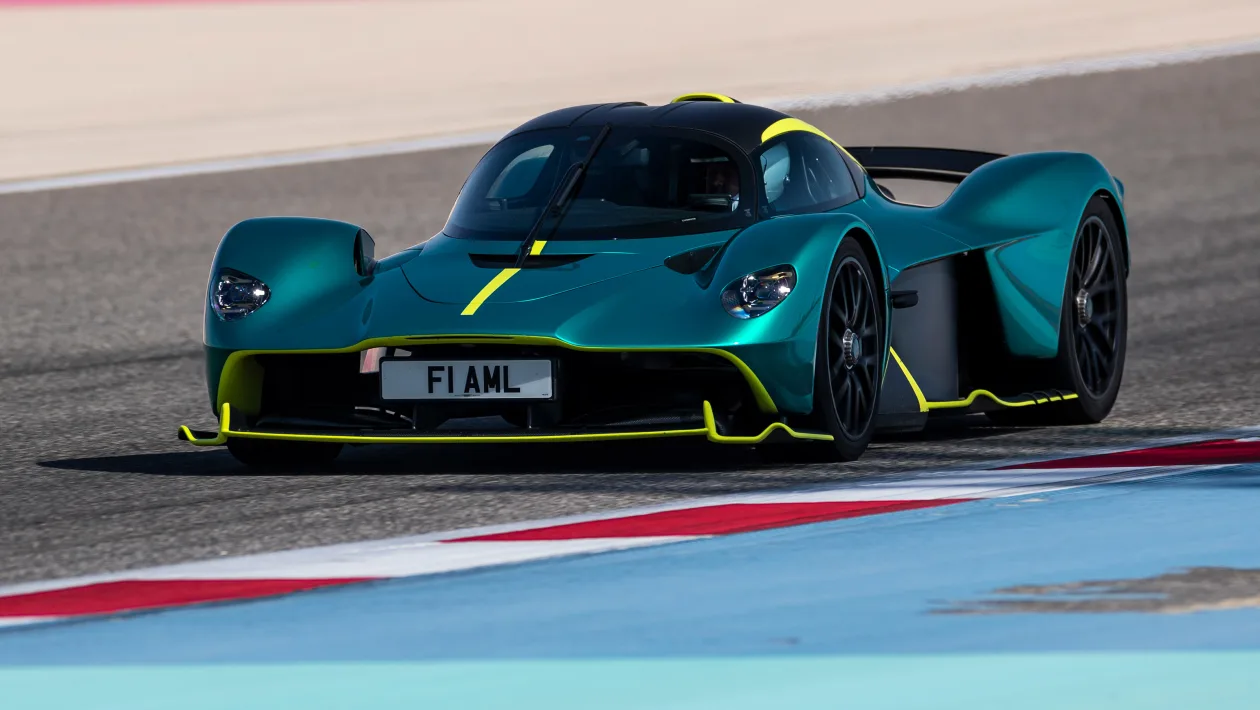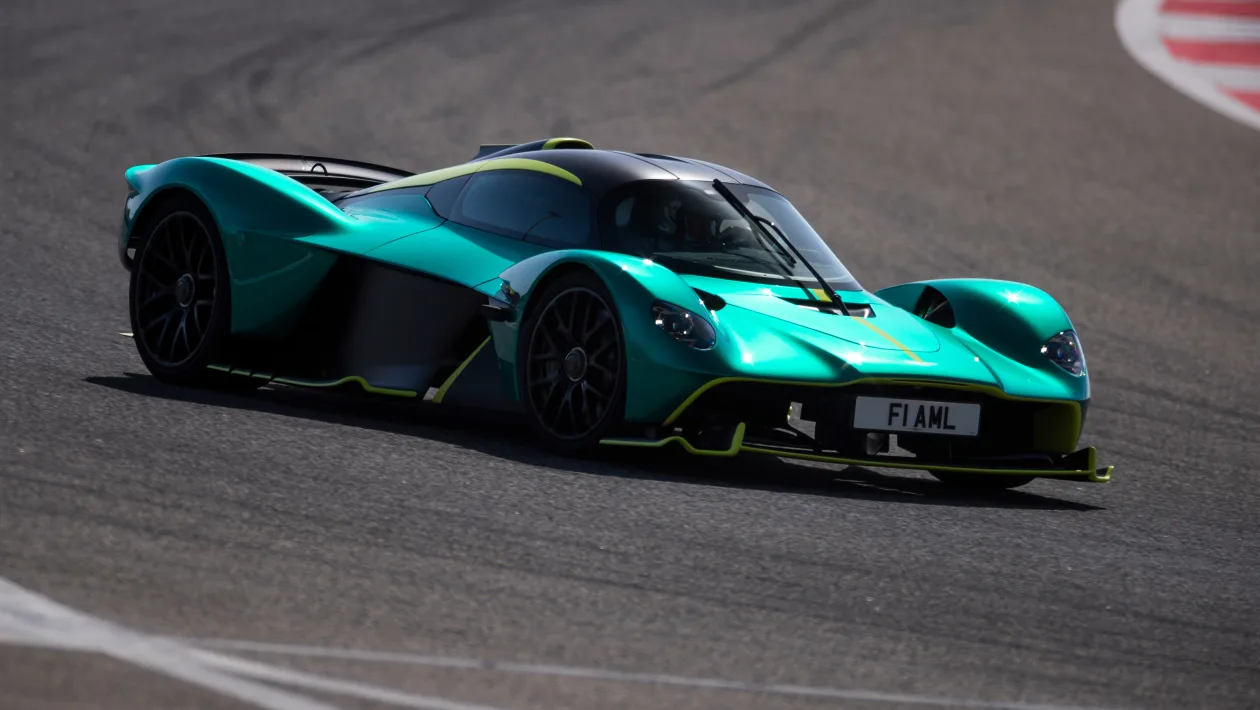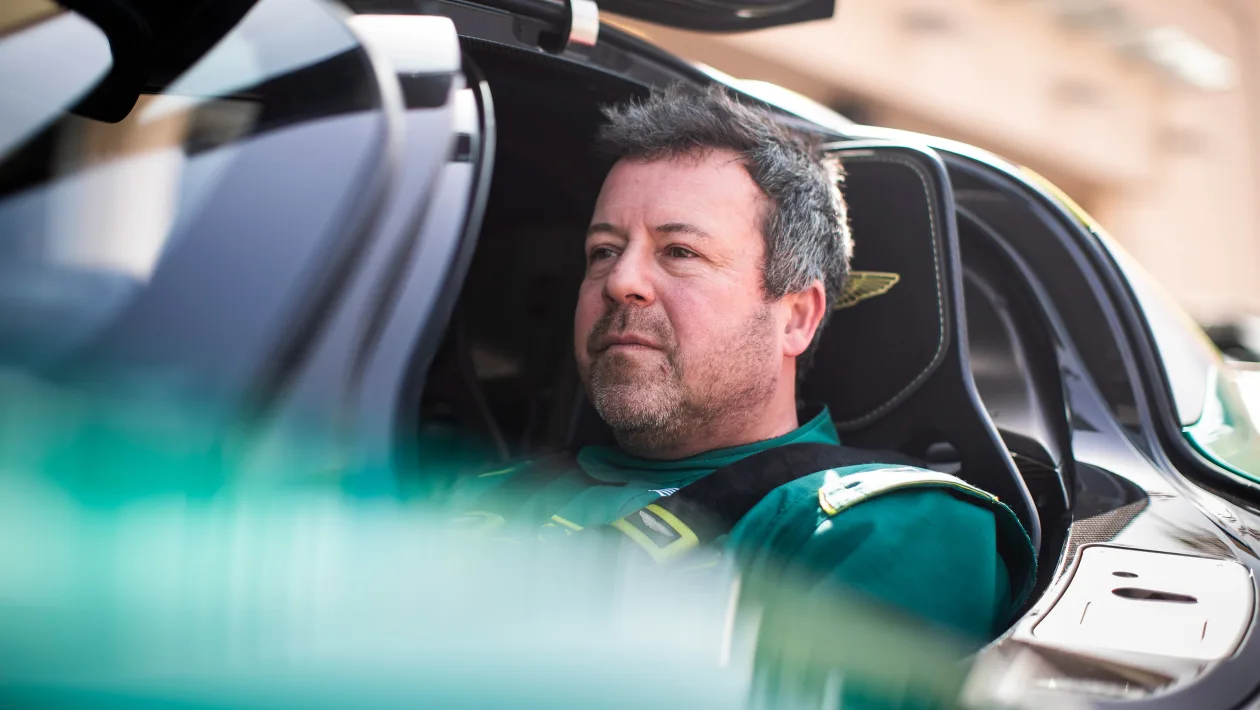Richard Meaden drives Aston Martin’s Adrian Newey-designed hybrid hypercar at Bahrain. Is it the best thing ever to wear number plates, or too uncompromising for its own good?
Not since the McLaren F1 have we been treated to the prospect of a car that would re-write the rules of road-legal performance. Seven long years in the making, Aston Martin’s Valkyrie project took Adrian Newey’s F1 Championship-winning genius and refracted it through a road-going hypercar prism. For all concerned it has been an irresistible – and near-impossible – opportunity to reach for the stars.
Seeing the Valkyrie parked in the pitlane at Bahrain International Circuit, it’s impossible not to be starstruck. It’s a sensationally small and svelte machine, with smooth, organic body panels forming an exoskeleton that simultaneously works and cheats the air like no car before it. Beneath the body sit gargantuan underfloor venturi tunnels that create an alien, mantis-like stance. It really is a breathtaking piece of work. One that obeys the functional demands of Newey’s punishing aero targets yet satisfies Aston’s desire for sculptural form.
Packaging-wise it’s as extreme as it gets. Open the engine cover and it all but bursts open like an over-filled holiday suitcase. The capsule-shaped cockpit is equally shrink-wrapped. Climbing in requires a technique otherwise known only to drivers of Le Mans prototypes. Once in, the ‘feet up’ driving position isn’t as extreme as you might expect, but it’s certainly unmatched for occasion.
Bringing the Valkyrie to life is simple. Just prod the steering wheel-mounted ‘Engine Start/Stop’ button twice to wake up the various layers of electronics, then hold the brake and press again to start. The muffling effect of helmet, balaclava and radio earplugs takes the sting out of the engine noise, but the sound that does reach your ears is a dirge. The promise of what 836kW and 11,100rpm holds in store is ample distraction, but there’s no trace of the V12’s musicality that treats bystanders to one of the best-sounding engines ever made.
Assistance from the e-motor makes pulling away from a standstill a cinch, but the Valkyrie remains intimidating at first acquaintance, as I have no idea how its aero and active suspension will feel. Thankfully first impressions are very encouraging if totally overwhelming.
The powertrain is a force of nature from the first squeeze of the throttle. The Cosworth-developed V12 is absolute screamer, but let’s not forget it also displaces a whopping 6.5 litres. Augmented by a Rimac-developed battery hybrid system, there’s slingshot torque whenever you need it. In the first few gears you can sense the Michelin Pilot Sport Cup 2s are wincing a bit, but the electronics nip wheelspin in the bud until those venturis start sucking the Valkyrie to the tarmac.
The steering has satisfying weight and brilliantly measured rate of response, so even with arms stiffened by nervous tension the steering is just calm enough to smooth the rough edges from your inputs. The brake pedal is firm, but not rock-hard like a pure race car’s, so much like the steering there’s welcome progression to help dial in your pedal effort. For such an alien craft the basics feel remarkably intuitive.
The speed the Valkyrie gains between corners is of another magnitude to any road car I’ve ever driven on track. The combination of hybrid-assisted shove exiting corners and searing top-end rush as you push to 11,000rpm through the gears is insanely intense. Using 9000rpm feels more than ample. Give it everything and you access another realm.
It’s not the raw acceleration that has your brain buffering so much as the speed you approach the braking zones – especially at the end of Bahrain’s start-finish straight. Approached in seventh gear with the throttle pinned wide open, the Valkyrie is doing a true 340km/h. The Alcon/Surface Transforms brakes have epic stopping power, but thanks to the active aero you also get a huge increase in downforce under hard deceleration. If you take a very deep breath and commit, the results are literally eye-popping.
Everything feels like it’s happening too fast, but the trick is to look further and further ahead. It’s all part of the Valkyrie recalibration process. Predictably the toughest aspect is understanding the active suspension and downforce, then learning to trust the electronics that underpin it.
For Newey, extreme aero and active suspension always went hand-in-hand. His solution combines regular springs and dampers with a torsion bar system actuated by powerful hydraulics, which serve to actively manipulate the suspension’s pre-load, countering the vertical loadings generated by the aerodynamics and giving the Valkyrie active anti-squat, anti-roll and anti-dive.
In theory active suspension could remain flat as a board, but it would be completely numb in terms of driver feedback. To provide the driver with sensory cues the Valkyrie’s suspension has been tuned to yield a small amount while maintaining a far higher degree of body control than a passive car. At its flattest and most tied-down in Track mode, the system subtly yields to accelerative, decelerative or lateral loads only for the briefest of moments before the platform is stabilised, so this still makes it tough to feel how hard you’re working the chassis because the sensation of leaning into the available grip is fleeting and finite.
It requires an unusual degree of sensitivity – and way more seat time than our allotted dozen laps – to consistently and committedly dig into the downforce. An added Valkyrie-specific challenge is gauging when the car is working with mechanical grip alone, and when the aerodynamics take over.
In slower corners you need to be mindful of how much torque you’re asking the rear tyres to transmit, and similarly how much braking force can be absorbed. In each instance there are electronic systems to rely on. Of these TC is easiest to sense intervening. ESC occasionally helps out when braking deep into slow, tightening corners. I never feel the ABS, which suggests I’m not being brave enough.
It’s in higher-speed corners where a greater leap of faith is required as you don’t have explicit, analogue reference points to draw from. It’s also clear the 20-inch front and 21-inch rear Cup 2s (N-rated Porsche items) are working in a realm they are not entirely comfortable with, so when you do trust in the aero you sense the tyre is struggling to cope. You certainly don’t get the outrageous feeling of limitless grip that comes from the combination of slicks and wings.
Cup R’s – not available when the Valkyrie programme began – would make a significant difference, but Aston engineers say they’d only be good for a few laps before wilting under the strain. It’s a real conundrum. One centred upon the Valkyrie being designed around road-legal tyres with acceptable wet weather performance, but existing to deliver crushing downforce on a racetrack.
In order to protect its tyres the Valkyrie bleeds-off downforce at high speed. Under power this means not exceeding a sustained peak of more than 600kg. That figure rises to 1100kg during braking events from V-max down to 220km/h. It’s a long way from the 1800kg originally touted soon after the Valkyrie was made public, but despite this – and the inexorable creep from a projected dry weight of 1030kg to an official 1270kg – the Valkyrie remains a remarkable achievement and a uniquely intense driving experience.
Paradoxically, Newey’s complex and uncompromising vision was probably always destined to be significantly compromised. That it takes time, skill and considerable mental application to master is more a statement than a criticism, and a process that will surely bring great satisfaction to Valkyrie customers who crave fresh challenges.
Its capabilities as a road car are something we can’t yet confirm, but hope to later this year. However good it might be, the horrendous cockpit noise is a major problem. A supercar’s soundtrack is a major selling point and should be a constant source of pleasure – something a noise-cancelling headset will undoubtedly deprive you of.
For now the Valkyrie is an unfolding enigma. One we will hopefully come to understand better with further exposure, but like a great piece of art, one that will doubtless continue to divide opinion forevermore.




